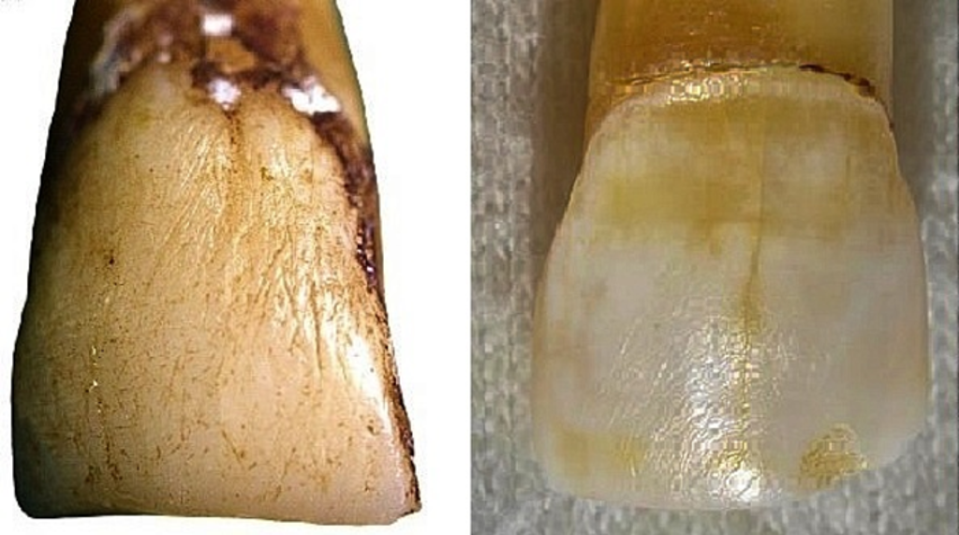Strange marks on Japanese macaques’ teeth have scientists rethinking human evolution
According to a new study, the discovery of peculiar patterns on wild Japanese macaques’ teeth could have major consequences on our knowledge of human evolution. Until now, these traces of unique wear were only observed on human teeth. They were useful as proof for our ancestors’ tool culture; with researchers arguing that the way ancient […]



According to a new study, the discovery of peculiar patterns on wild Japanese macaques’ teeth could have major consequences on our knowledge of human evolution.
Until now, these traces of unique wear were only observed on human teeth. They were useful as proof for our ancestors’ tool culture; with researchers arguing that the way ancient people handled animal hide with their teeth formed it.
Archaeologists previously discovered “toothpick” grooves in ancient human teeth. Instruments put between back teeth to remove food debris or relieve discomfort likely have formed it.
However, the journal American Journal of Biological Anthropology recently published a study last week. It discovered that Japanese macaques who do not use tools have the same teeth wear as those who do.
Researchers currently assume that the toothpick-like markings in these monkeys are causes of “accidental ingestion of sand” and “oral processing of marine mollusks.”
They believe that interpreting similar wear in prehistoric human remains as evidence of tool use “may need reconsidering.”
“Up until now, the large scratches in the front teeth of fossil humans have been considered to be caused by a behavior called ‘stuff and cut’, in which an item such as an animal hide is held between the front teeth and a stone tool is used for slicing,” Ian Towle says. He is the study co-author from the University of Otago in New Zealand.
The toothpick-like grooves on back teeth and massive uniform scratches on the macaques’ front teeth existed by eating shellfish from rocks and chewing grit and sand with their food, as per the latest study.
Macaque group

Scientists have studied this macaque group for more than 70 years. They are well-known for doing astonishing behaviors such as washing food in water and eating fish. Scientists never spotted his species utilizing tools or other items that could produce the unusual tooth wear observed.
“Unusual wear on our fossil ancestors’ teeth is thought to be unique to humans and demonstrates specific types of tool use. These types of wear have also been considered some of the earliest evidence of cultural habits for our ancestors,” Dr. Towle said.
“However, our research suggests this idea may need reconsidering since we describe identical tooth wear in a group of wild monkeys that do not use tools,” he added.
The findings, according to the researchers, raise crucial questions about cultural shifts during human development. It also recommends that early evidence of cultural behaviors should need a reassessment.
“We are so used to trying to prove that humans are unique, that similarities with other primates are often neglected. Studying living primates today may offer crucial clues that have been overlooked in the past,” Dr. Towle said.
This article Strange marks on Japanese macaques’ teeth have scientists rethinking human evolution appeared first on BreezyScroll.
Read more on BreezyScroll.


